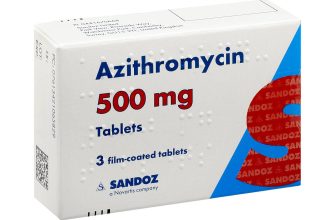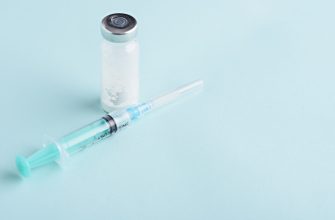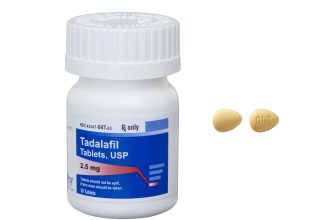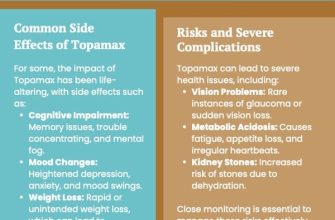Choosing between Propecia (finasteride) and a hair transplant hinges on your specific situation and goals. Propecia, an oral medication, works systemically to slow hair loss and may stimulate regrowth in some men. However, its effectiveness varies, and results aren’t always permanent; hair loss often resumes upon discontinuation. It’s suitable for those experiencing early hair loss or seeking to maintain existing hair.
A hair transplant, conversely, offers a more direct and potentially permanent solution. This surgical procedure involves grafting hair follicles from a donor area (typically the back of the head) to balding areas. While it provides noticeable, long-lasting results, consider the procedure’s cost, recovery time (typically a few weeks), and potential side effects, such as scarring or infection. It’s ideal for individuals with significant hair loss or those seeking a visible, immediate improvement.
Factors to consider: Your age, the extent of your hair loss, your budget, and your risk tolerance all play crucial roles in this decision. A consultation with a dermatologist or hair restoration specialist is highly recommended. They can assess your individual needs and provide personalized advice to help you choose the best approach for your specific circumstances. Don’t hesitate to ask detailed questions about potential risks and expected outcomes with either treatment option.
- Propecia vs. Hair Transplant: Choosing the Right Approach for Hair Loss
- Understanding Finasteride (Propecia): How it Works and its Limitations
- How Effective is Finasteride?
- Limitations of Finasteride
- Finasteride vs. Hair Transplant
- Consulting a Doctor
- Hair Transplant Surgery: Procedure, Recovery, and Long-Term Results
- Cost Comparison: Propecia vs. Hair Transplant – A Detailed Breakdown
- Propecia’s Ongoing Costs
- Hair Transplant Costs: A Variable Picture
- Financial Considerations: A Balanced Perspective
- Additional Costs
- Candidate Selection: Who is a Suitable Candidate for Each Treatment?
- Side Effects and Risks: Weighing the Pros and Cons of Both Options
- Propecia Side Effects Summary
- Hair Transplant Risks Summary
- Combining Propecia and Hair Transplant: Synergistic Effects and Considerations
- Pre-Operative Propecia Use
- Post-Operative Propecia Continuation
- Potential Side Effects and Considerations
- Making the Decision: Factors to Consider When Choosing Your Treatment Path
- Financial Aspects
- Time Commitment
- Side Effects
- Hair Loss Severity and Pattern
- Desired Results
- Long-Term Outlook
Propecia vs. Hair Transplant: Choosing the Right Approach for Hair Loss
Consider your hair loss pattern and extent. Propecia (finasteride) is best for men with diffuse thinning across the scalp, while a hair transplant offers better results for localized baldness, particularly receding hairlines or crown thinning. Propecia prevents further hair loss and may stimulate some regrowth, but it doesn’t create new hair follicles. A hair transplant, conversely, directly adds new hair follicles, offering a permanent solution for the transplanted area.
Assess your budget and time commitment. Propecia is a relatively inexpensive, ongoing medication. Hair transplants, however, are a significant upfront investment, requiring several hours in a surgical setting. Recovery time involves some downtime.
Evaluate your expectations. Propecia offers gradual improvement, potentially halting further loss and stimulating modest regrowth. Results vary considerably, and stopping treatment leads to hair loss resumption. Hair transplants provide immediately visible results, but the transplanted hair grows gradually. Full results are evident several months post-surgery.
Consult a dermatologist or hair restoration specialist. A professional evaluation is vital. They can assess your specific situation, discuss your goals and suggest the most suitable approach or a combined strategy involving both medication and surgery. They’ll also inform you of potential side effects, associated risks, and realistic outcomes for your unique circumstances.
Finally, remember that both Propecia and hair transplants have limitations. Not everyone is a candidate for either treatment. A thorough consultation ensures you make an informed decision aligned with your individual needs and possibilities.
Understanding Finasteride (Propecia): How it Works and its Limitations
Finasteride, the active ingredient in Propecia, works by inhibiting the enzyme 5-alpha-reductase. This enzyme converts testosterone into dihydrotestosterone (DHT), a hormone strongly linked to male pattern baldness. By blocking DHT production, Finasteride reduces hair loss and may even promote hair regrowth in some men.
How Effective is Finasteride?
Studies show Finasteride is effective for many men with male pattern hair loss. However, results vary. Some men experience significant hair regrowth, while others see only a slowing of hair loss. The likelihood of success depends on factors such as age, genetic predisposition, and the duration of hair loss.
Limitations of Finasteride
It’s crucial to understand Finasteride’s limitations. It primarily targets the scalp and doesn’t address other causes of hair loss. Also, its effects are usually temporary; stopping treatment leads to hair loss resumption. Finally, potential side effects, though uncommon, include sexual dysfunction (decreased libido, erectile dysfunction) and gynecomastia (breast enlargement). These side effects are generally mild and reversible upon cessation of treatment.
Finasteride vs. Hair Transplant
| Feature | Finasteride | Hair Transplant |
|---|---|---|
| Cost | Relatively inexpensive | Significantly more expensive |
| Procedure | Oral medication | Surgical procedure |
| Results | Gradual hair regrowth or slowing of hair loss | Immediate, visible results |
| Permanence | Temporary; requires continued use | Permanent, natural-looking results |
| Side effects | Possible sexual side effects | Potential for scarring, bleeding, infection |
Consulting a Doctor
Before starting Finasteride or considering a hair transplant, consult a dermatologist or hair loss specialist. They can assess your individual situation, discuss potential risks and benefits, and help determine the best course of action for you.
Hair Transplant Surgery: Procedure, Recovery, and Long-Term Results
Choose a reputable surgeon with extensive experience and a strong track record. This is paramount for optimal results.
The procedure itself involves extracting hair follicles from a donor area (usually the back of the head), where hair is genetically resistant to balding. These follicles are then carefully implanted into the balding areas. There are two main techniques: Follicular Unit Transplantation (FUT), which involves removing a strip of scalp, and Follicular Unit Extraction (FUE), which extracts individual follicles.
- FUT: Often yields a higher graft yield per session, leading to more significant coverage in a single procedure. Healing involves a linear scar at the donor site.
- FUE: Leaves behind many tiny, inconspicuous dots instead of a linear scar. This method may require multiple sessions to achieve the same density.
Recovery varies, but expect some swelling, redness, and scabbing in the treated areas. Pain is usually minimal and managed with prescribed medication. Complete healing generally takes several months. Avoid strenuous activity and direct sunlight during this period. Follow your surgeon’s post-operative instructions diligently.
- Week 1-2: Swelling and scabbing are most noticeable. Gentle cleansing is recommended.
- Week 3-4: Most of the scabbing should have fallen off. New hair growth is still minimal.
- Month 3-6: Transplanted hair may fall out, which is normal. New, stronger hair will start growing.
- Month 6-12: Noticeable hair growth becomes evident. Full results typically take 12-18 months.
Long-term results depend on several factors including your age, genetics, and the surgeon’s skill. With proper care, the transplanted hair should grow naturally and permanently. Annual check-ups with your surgeon are recommended to monitor hair growth and address any concerns.
While a hair transplant offers a permanent solution for hair loss, maintenance is crucial. Maintain a healthy diet and lifestyle to support hair growth. Discuss future hair loss prevention strategies with your doctor.
Cost Comparison: Propecia vs. Hair Transplant – A Detailed Breakdown
Propecia (finasteride) offers a significantly cheaper initial investment. A year’s supply typically costs between $60 and $150, depending on dosage and pharmacy. This makes it accessible to a broader range of individuals. However, it’s crucial to remember that Propecia requires continuous use for ongoing results; stopping treatment usually leads to hair loss resuming.
Propecia’s Ongoing Costs
The long-term financial commitment to Propecia can be substantial. Continuing treatment indefinitely means consistent monthly or yearly expenses. Consider this ongoing cost when comparing it to a one-time (or few-time) hair transplant procedure.
Hair Transplant Costs: A Variable Picture
Hair transplant costs vary widely. The price depends on several factors: the number of grafts needed, the surgeon’s experience and location, and the clinic’s overhead. Expect to pay anywhere from $4,000 to $15,000 or more for a full procedure. While this represents a large upfront investment, it’s a potentially one-time expense for permanent results.
Financial Considerations: A Balanced Perspective
A hair transplant provides a permanent solution, eliminating the need for ongoing medication costs. Weigh the higher initial expense against the long-term savings of avoiding continuous Propecia purchases. Evaluate your budget and long-term financial goals to determine which option aligns better with your individual circumstances. Consult with your doctor and financial advisor for a thorough evaluation.
Additional Costs
Remember that both options might entail additional costs. Propecia requires regular check-ups with a doctor to monitor for side effects, while hair transplants often involve pre- and post-operative care, adding to the total expense. Factor these additional expenditures into your overall cost analysis.
Candidate Selection: Who is a Suitable Candidate for Each Treatment?
Finasteride (Propecia) works best for men experiencing male pattern baldness (androgenetic alopecia) with miniaturization of hair follicles, particularly at the crown and temples. It’s most effective in the early stages of hair loss.
- Ideal Propecia Candidate: Men aged 18-41 experiencing noticeable hair thinning, with relatively good hair density remaining. Early intervention often yields the best results.
- Propecia May Not Be Suitable For: Women, individuals with liver disease, or those allergic to its components. Propecia is also not suitable for advanced hair loss where follicles are completely dormant.
Hair transplantation, conversely, is a suitable option for individuals with significant hair loss, stable hair loss pattern, and sufficient donor hair in the back and sides of the scalp. The procedure works by transplanting healthy hair follicles from one area to another, addressing areas with complete hair loss or significant thinning.
- Ideal Hair Transplant Candidate: Men and women with significant hair loss who have stable hair loss patterns. Adequate donor hair is critical for successful transplantation.
- Hair Transplant May Not Be Suitable For: Individuals with insufficient donor hair, active inflammatory scalp conditions, unrealistic expectations, or poor overall health.
Ultimately, the best choice depends on individual circumstances. A consultation with a dermatologist or hair transplant surgeon allows for personalized assessment and recommendation, guiding the selection of the most appropriate treatment or a combination thereof.
Side Effects and Risks: Weighing the Pros and Cons of Both Options
Propecia (finasteride) carries potential side effects, including decreased libido, erectile dysfunction, and ejaculation problems. These are generally reported in a small percentage of users and often resolve upon stopping treatment. However, some men experience persistent side effects. Discuss these risks thoroughly with your doctor before starting Propecia. Regular monitoring is recommended.
Propecia Side Effects Summary
Incidence varies but potential side effects include: decreased libido (1.8%), erectile dysfunction (1.3%), decreased volume of ejaculate (1.1%), gynecomastia (0.1%). Rare, but serious allergic reactions are possible. Consider these risks carefully alongside the potential hair regrowth benefits.
Hair transplantation, while offering permanent results, presents its own set of risks. These include: bleeding, infection, scarring, pain, and numbness. The procedure’s success rate depends on factors such as the surgeon’s skill, the recipient’s hair quality, and the density of the transplanted grafts. Expect some swelling and bruising post-surgery, and meticulous aftercare is critical to minimize complications.
Hair Transplant Risks Summary
Possible complications: Infection (rare, but serious), poor graft survival (affects density), unnatural appearance (due to poor planning or technique), scarring (visible or not, depending on technique used). Choose a reputable surgeon with proven experience to mitigate risks.
Ultimately, the best approach depends on individual circumstances, preferences, and risk tolerance. A thorough consultation with a dermatologist or hair transplant surgeon will help you assess your suitability for each option and make an informed decision based on your specific needs and potential side effects. Open communication with your medical provider is vital throughout the process.
Combining Propecia and Hair Transplant: Synergistic Effects and Considerations
Many patients find combining finasteride (Propecia) with a hair transplant maximizes results. Finasteride helps prevent further hair loss, while the transplant replaces lost follicles. This combined approach offers a powerful strategy for hair restoration.
Pre-Operative Propecia Use
Starting finasteride several months before surgery can improve the transplant’s success. Studies suggest that Propecia can thicken existing hairs, providing better follicular units for grafting and potentially increasing the density of the transplanted area. Six months of pre-operative use is a common recommendation. Always consult your doctor to determine the ideal timeframe for your specific circumstances.
Post-Operative Propecia Continuation
Continuing finasteride after the procedure is crucial for long-term results. It protects the remaining hairs and newly transplanted grafts from further miniaturization and loss, thereby preserving the outcome of the surgery. Maintaining consistent use post-operation is key to sustaining a fuller head of hair.
Potential Side Effects and Considerations
While generally safe, finasteride can cause side effects in some men, including decreased libido or erectile dysfunction. Open communication with your doctor about potential side effects is paramount. Discuss your medical history, including any existing conditions, before starting or continuing finasteride. Regular check-ups are recommended to monitor your progress and address any issues that may arise. A proper evaluation of your overall health is crucial before proceeding.
Making the Decision: Factors to Consider When Choosing Your Treatment Path
Consult a dermatologist or hair transplant surgeon. They’ll assess your hair loss, determine the underlying cause, and discuss suitable treatment options, considering your age, hair type, and overall health. This personalized approach is key.
Financial Aspects
Propecia is generally less expensive upfront than a hair transplant, but requires ongoing medication costs. Hair transplants have a higher initial cost, but the results are potentially permanent. Budget carefully, factoring in potential long-term expenses for both.
Time Commitment
Propecia requires daily medication and consistent adherence for results. Hair transplants involve a surgical procedure and recovery time, including potential downtime and follow-up appointments. Weigh your tolerance for each treatment’s duration.
Side Effects
Propecia carries a small risk of side effects like decreased libido or erectile dysfunction. Hair transplants have potential risks such as bleeding, swelling, and infection, though these are generally manageable. Thoroughly discuss potential side effects with your doctor.
Hair Loss Severity and Pattern
For minimal hair loss, Propecia might suffice. For significant hair loss or balding patches, a hair transplant may offer more substantial and visible improvement. Your doctor can advise on which option aligns with your specific needs.
Desired Results
Propecia slows hair loss and may stimulate regrowth in some areas. Hair transplants restore hair in specific areas, providing a more dramatic, immediate result. Consider the level of hair restoration you desire and whether gradual improvement or immediate impact better fits your expectations.
Long-Term Outlook
Propecia’s effectiveness may cease upon discontinuation. Hair transplants offer longer-lasting, if not permanent, results. Think about your long-term commitment to treatment and the level of maintenance you are willing to undertake.










